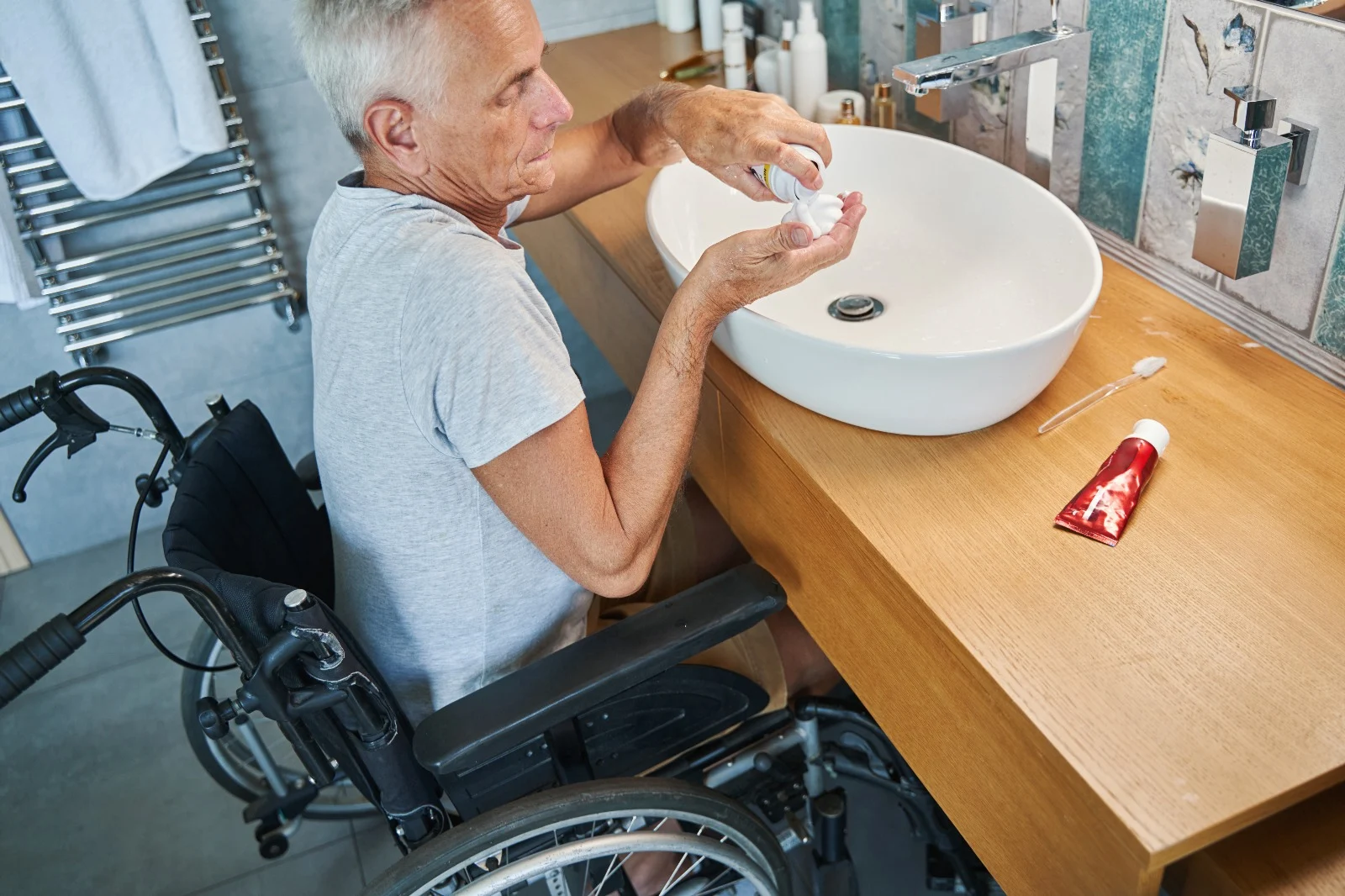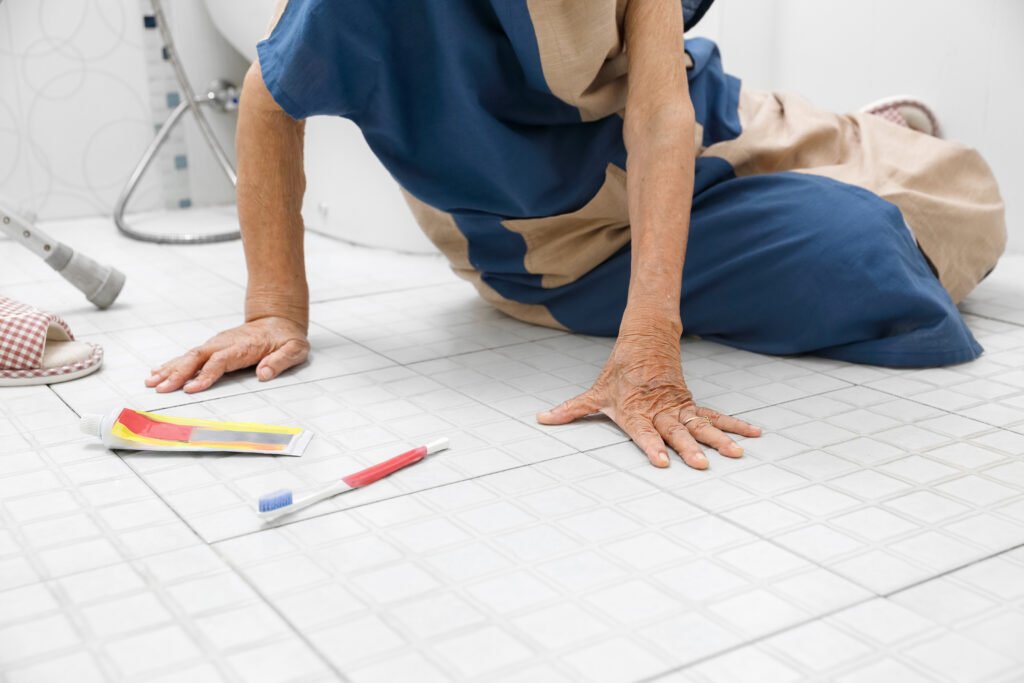10 Simple Strategies for Assisting an Elderly or Disabled Person to Use an Accessible Bathroom

Assisting an elderly or disabled person in using an accessible bathroom requires patience, empathy, and a good understanding of their specific needs.
Did you know?
In 2021, there were an estimated 5.7 million informal care providers in the United Kingdom, People aged 46-65 were the largest age group to become unpaid carers with 41% of people becoming unpaid carers in this age group.
Here are 10 simple strategies to help you provide effective assistance:
Clear Pathways:
Ensure that the pathway to the bathroom is clear of obstacles, tripping hazards, and clutter to allow for easy movement with mobility aids like walkers or wheelchairs.
Non-Slip Surfaces:
Make sure the bathroom floor is slip-resistant by using altro non-slip flooring and slip-resistant materials.
Grab Rails:
Install grab Rails near the toilet, shower, and bathtub to provide stability and support. These bars can assist the person in standing, sitting, and maintaining balance.
Raised Toilet Seat:
Consider using a raised toilet seat to make it easier for the person to sit down and stand up. This can be particularly helpful for those with mobility issues.
Shower Chair or Bench:
Provide a shower chair or bench in the shower area to allow the person to sit comfortably while bathing. This is especially important for those who cannot stand for extended periods.
Handheld Shower head:
Install a handheld shower head that can be easily manoeuvred. This allows the person or their caregiver to direct the water flow to the desired areas without straining.
Easy-to-Reach Supplies:
Ensure that toiletries, towels, and other necessary items are within easy reach. This prevents the person from overreaching or straining themselves.
Accessible Sink:
Opt for a sink with knee clearance underneath to accommodate wheelchair users. The faucet handles should be easy to operate, even for individuals with limited hand dexterity.
Proper Lighting:
Install bright and well-distributed lighting to prevent falls and make it easier for the person to navigate the bathroom, especially during night time visits.
Personalised Approach:
Remember that everyone’s needs are unique. Always communicate with the individual to understand their preferences and limitations, and adjust your assistance accordingly.
Remember, while these strategies can be helpful, respecting the person’s independence and privacy is crucial. Always ask for their preferences and involve them in decisions regarding their bathroom routine, here are some facts regarding the reasons behind taking these considerations to support yourself or a loved one.
Safety:
Many elderly or disabled individuals face increased risks of falls and accidents due to mobility issues. Proper assistance can help prevent these incidents, ensuring their safety and well-being.
Dignity and Independence:
Being able to use the bathroom independently is essential for maintaining dignity and a sense of control. By offering appropriate assistance, you help them maintain a level of independence and self-esteem.
Health and Hygiene:
Accessible bathrooms are designed to accommodate specific needs, such as easier access to toilets, showers, and sinks. Proper hygiene is essential for overall health, and assisting with bathroom use ensures that individuals can maintain cleanliness effectively.
Physical Comfort:
Elderly and disabled individuals often experience discomfort or pain when navigating a standard bathroom setup. Assisting them in an accessible bathroom reduces physical strain and discomfort, promoting their overall comfort.
Preventing Social Isolation:
Limited mobility or difficulties with bathroom use can lead to increased isolation. By helping them use an accessible bathroom, you enable them to participate in social activities and outings with more confidence.
Reducing Caregiver Burden:
For caregivers, assisting with bathroom use can be physically demanding and emotionally challenging. Knowledge of proper techniques and strategies can reduce caregiver stress and enhance the quality of care provided. Additional information can be found on the NHS website.
How to help someone you care for keep clean – NHS
Effective Communication:
Proper assistance in using an accessible bathroom involves effective communication, which fosters trust and understanding between the individual and their caregivers or support network.
Overall Quality of Life:
The ability to maintain personal hygiene, use the bathroom independently, and participate in daily activities contributes to an individual’s overall quality of life. Assisting with these tasks ensures that they can enjoy a better quality of life despite their limitations.
AJT Showers LTD
Author: Danielle

September 15, 2025
For many of us, home is where we feel most...

August 31, 2025
If you’ve ever felt that familiar ache after a day...

July 22, 2025
As a future mental health nurse, it might help if...
July 22, 2025
Designing a sustainable and eco-friendly bathroom involves making conscious choices...
Get In Touch
Opening hours
Monday - Friday 9:00am - 5:00pm
Saturday Appointment Only
Sunday Closed
Give us a call
0800 001 6649Send us an email
enquiries@ajtshowersltd.co.uk
Visit our showroom
Unit C3, Riverside Industrial Estate,
Bridge Road, Littlehampton, BN17 5DF


